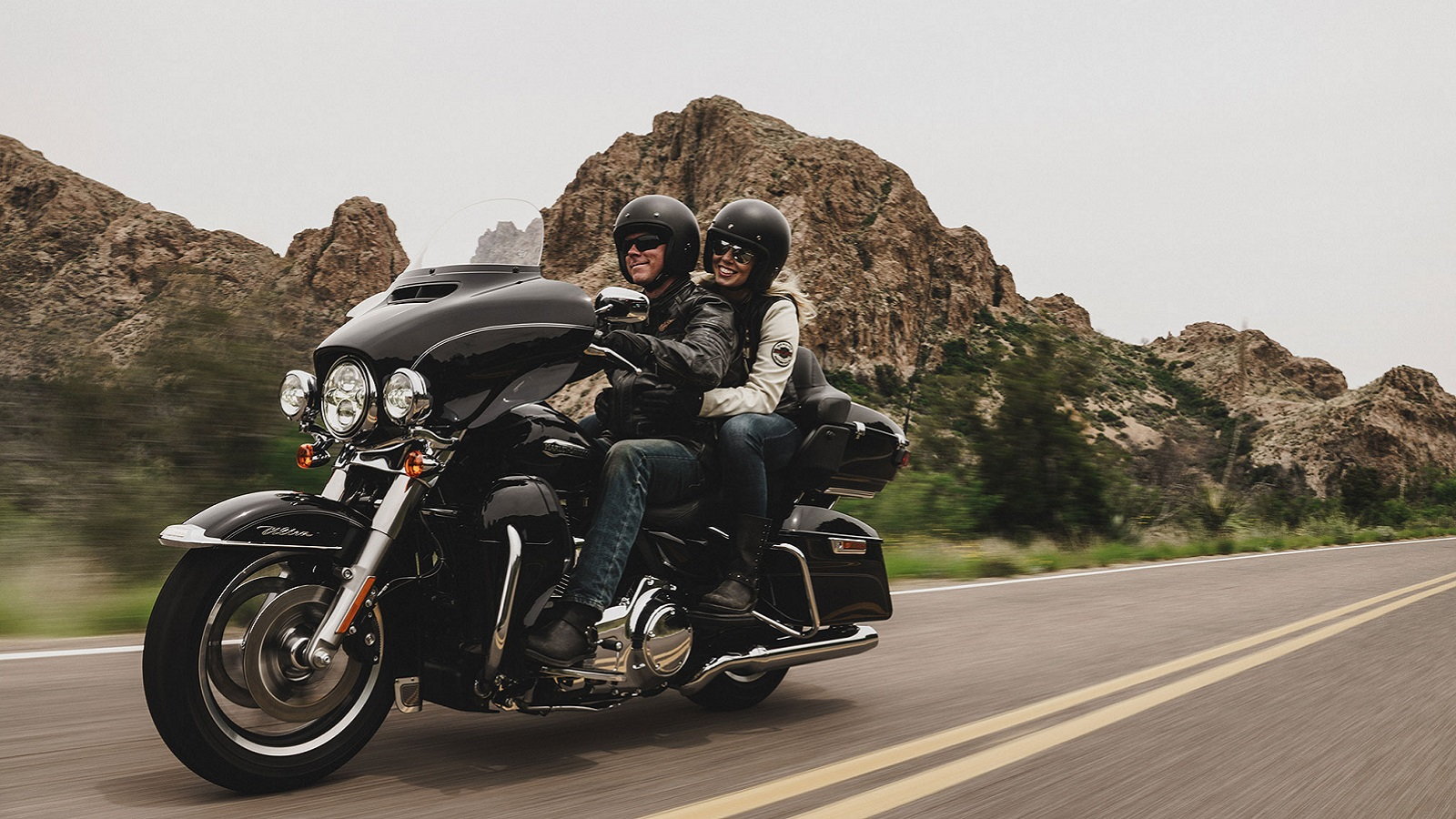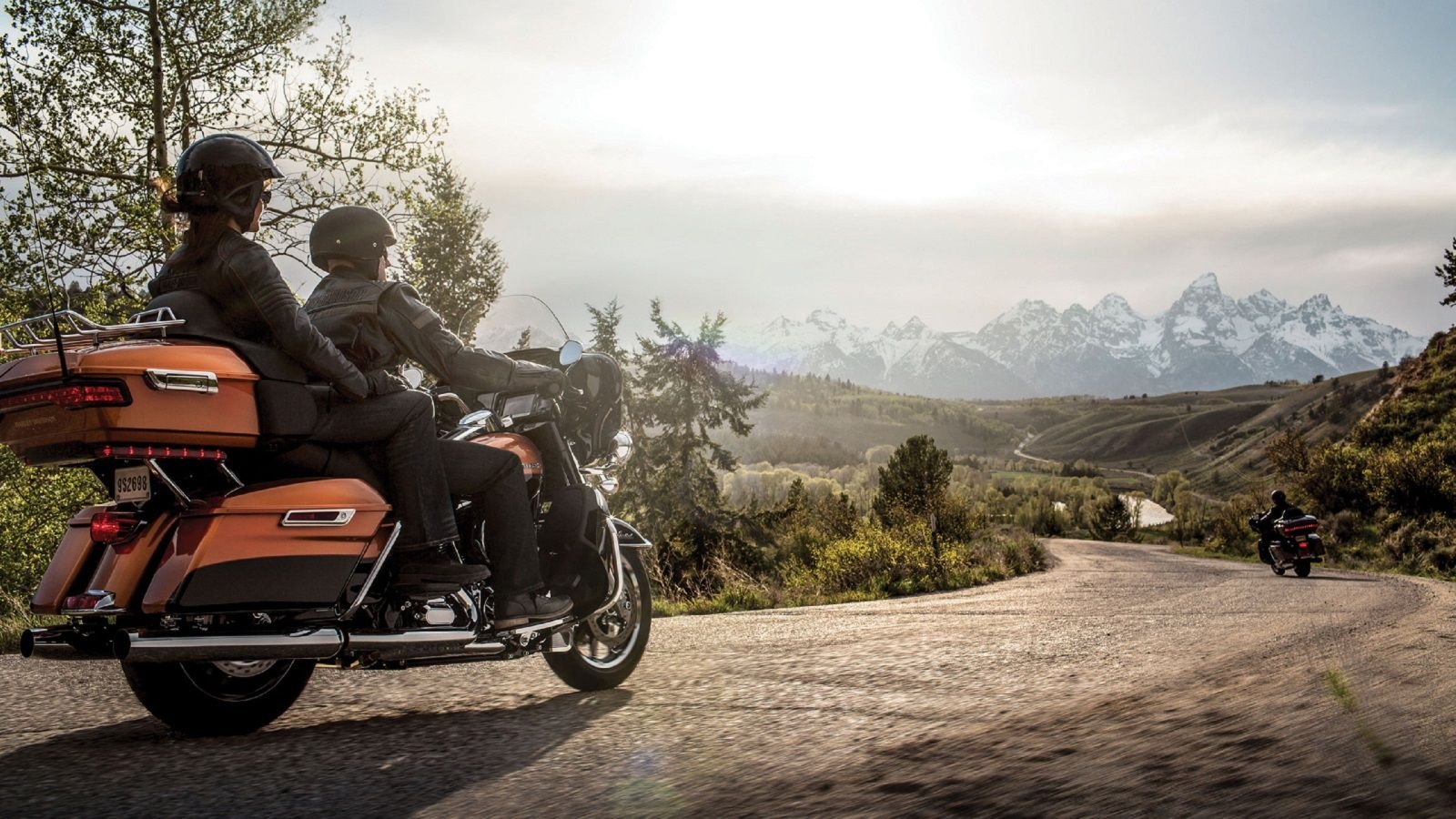5 Safety Tips for Harley Passengers
Unlike a car, there is more to being a motorcycle passenger than just jumping on the back of a bike and riding off into the sunset. Passengers are active participants in two-up motorcycling riding, so here are a few tips to ensure your safety when riding on the back.










1. Head Protection
Before you go for a ride, you are going to want a helmet with the correct certification and fit in order to protect yourself. If there is a DOT sticker on the helmet, the manufacturer has tested it to meet the standards for impact absorption, penetration resistance, and retention. Helmets with an ECE or Snell certification undergo further testing to different standards, though many helmets meet all three. Helmets are available in full-face, modular, 3/4, and 1/2 designs, but whichever style you choose, be sure the helmet fits your head snugly. You should not be able to twist or slide the helmet around on your head and the strap should cinch up tight under your chin. Full-face and modular helmets have face shields built in to provide eye protection. If opting for an open-face dirt bike style helmet, a 3/4 or half helmet, a pair of sunglasses or googles will come in handy to combat wind, bugs, and road debris. A helmet is the most important piece of protective equipment you wear on a motorcycle, even though it is not legally required in some states.
>>Join the conversation about Safety Tips for Passengers right here in the Harley-Davidson Forum!
2. Other Safety Gear
Besides the helmet, you should seriously consider wearing other attire that is well suited for motorcycle riding as well. All too often we see passengers wearing shorts, sandals, and tank tops hop on the back for a ride, while the rider is properly geared up. Even while just cruising down a country road, if an accident were to occur, these riders would suffer significant injuries. Asphalt against skin is not pretty, even at 30 mph and a minor tip-over while parking an 800+ pound Harley can cause great pain without proper attire. Gloves are probably the most important and overlooked protective gear, because you tend to put their hands out when falling, so add a quality pair to the list. Shoes or boots with adequate ankle protection are recommended, but at the very least they should be leather and closed-toe. A durable pair of pants, that are abrasion resistant, typically leather, should be worn to literally protect your butt. A leather or textile jacket protects your arms, back and chest/belly if you were to fall off. If it looks like it may rain, or the temperature may change suddenly, take along another layer to keep warm, and waterproof gear to stay dry.
>>Join the conversation about Safety Tips for Passengers right here in the Harley-Davidson Forum!
3. Points of Contact
As a passenger, give the bike the once over before going on a ride. Ensure the motorcycle is properly equipped for two-up riding with a passenger seat and foot pegs, and make sure the pegs are folded out. Be sure to identify the exhaust pipe(s) routing and moving parts, such as the drive belt or rear wheel, to prevent your legs and feet from coming into contact with them while in motion. Consider if the motorcycle has a back rest to lean against, or hand rails to hold onto. It is typically a good idea to discuss with the rider how to get on and off, before trying it, and ask what they prefer you to hold onto, before you start moving.
>>Join the conversation about Safety Tips for Passengers right here in the Harley-Davidson Forum!
4. Bodies in Motion
The weight of your body and how you move it directly affects the handling of a motorcycle. Motorcycles lean into corners, and the rider typically shifts their weight in order to help control the angle of the lean. If the passenger suddenly leans into the corner, or tries to remain upright while the motorcycle is leaning into the turn, the rider will have to compensate to maintain the proper line. The general rule of thumb when a passenger is to look over the inside shoulder of the rider while cornering to align your body with theirs. Whatever you do, the most important things is that you keep doing it all the way through the corner.
Another important thing to consider is braking and accelerating. Motorcycles (and the riders on them) pitch forward under braking conditions, so use your legs to keep from sliding forward into the rider. Try to anticipate stops and keep your helmet and head from tapping theirs at each stop sign When accelerating, keep a firm grip on the rider's waist or other hand holds when accelerating to prevent from sliding off of the seat, especially on a bike with no sissy bar or tail trunk.
>>Join the conversation about Safety Tips for Passengers right here in the Harley-Davidson Forum!
5. Chat with the Chief
Perhaps one of the most important and overlooked aspects of riding as a passenger is communication with the rider. When riding on the back for the first time, consider all of the important elements that go into riding on a motorcycle and don't simply rush into going for a ride without discussing some ground rules. The rider should help you out with avoiding contact with hot or moving parts and explain how/when to get on and off of the bike. The rider should also tell you how they prefer you to move when cornering, accelerating, and braking, or if they prefer you stay as still as possible. Unless you are on a touring rig, or have aftermarket intercoms, once the bike is running and moving it is much harder to communicate.
Before you hit toe road, you should express how comfortable or scared you are on the motorcycle. Let the rider know if you feel the need to start out slow before working your way up to highway speeds. It is a good idea to establish a few signs or hand signals to communicate with the rider before taking off, since verbal communication can be almost impossible with wind and engine noises at highway speed. As a passenger, you are an active participant in riding the motorcycle, so it is important to establish a good line of communication with the rider for both the sake of safety and riding enjoyment.
>>Join the conversation about Safety Tips for Passengers right here in the Harley-Davidson Forum!>>Join the conversation about Safety Tips for Passengers right here in the Harley-Davidson Forum!And to keep your bike running, so you don't end up a passenger on someone else's bike, use the how-to section of HDForum.com

